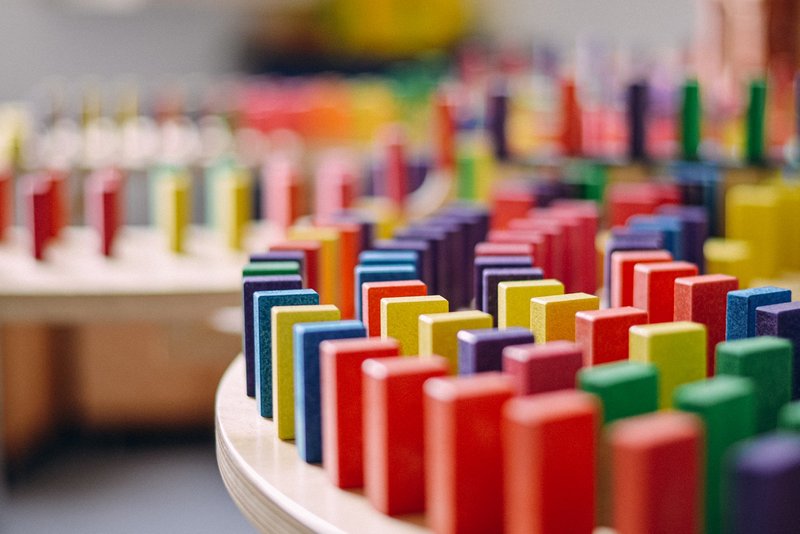
Cult classic with a kick: 100 years of Tipp-Kick
Table football in retro look: The greatest league of all times
Written by Sibylle Dorndorf
It’s said that there are managers who have a Tipp-Kick game on their desk. For motivation, to fight those low moments, for brainstorming. But the cult classic is not only more popular than ever as an office game: Tipp-Kick has also become a real alternative to mobile phones, PlayStations and other game consoles. 100% analogue, ingeniously simple and as fly as ever.
The fascinating history of Tipp-Kick
2 friends are all you need
There is hardly any other game that connects generations and crosses borders like Tipp-Kick does. Just as football brings different countries and cultures together, Tipp-Kick also creates a sense of unity in multi-cultural societies and uses a language that is understood everywhere.
Kick-off
In 1924, Edwin Mieg had a brilliant idea - from today's perspective - and developed a game through to market maturity. Game contents: a 107.5 cm x 71.5 cm non-slip felt pitch, one player, one goalkeeper. In 1926, not being able to afford an exhibition stand, the entrepreneur presented one of the first versions of Tipp-Kick on the entrance steps to the Leipzig Spring Fair. Before the Second World War, the sample fair offered the most comprehensive overview of new toys.
Hard-working years ...
In 1938, Edwin Mieg built his own factory in Schwenningen am Neckar. From then on, the zinc kickers were cast in the company's own factory. After Edwin Mieg's death in 1948, his sons Peter and Hansjörg took over the company. The game remained unchanged until the 1950s.
The Miracle of Bern
"The ball is round and a game lasts 90 minutes" – German coaching legend Sepp Herberger knew what he was talking about. He led the German team to victory in the 1954 World Cup. The Miracle of Bern also set a benchmark for the Tipp-Kick company: Sales figures soared: 180,000 games were sold. The breakthrough for Germany's smallest toy factory.
A goalscoring legend
In 1967, a young footballer appeared on the Tipp-Kick packaging. For a fee of DM 1,000, Mieg obtained the rights to the name and image of Gerd Müller, who went on to become a goal scoring legend.
Good times - bad times
The Bundesliga scandal in the 1970s led to a slump in sales figures and the poor performance of the German national team at the 1978 World Cup in Argentina and the 1994 World Cup in the USA also had a negative impact on the annual balance sheet.
Good advertising
At the end of the 1990s, a new business trend emerged and with it a new, lucrative field for the company: Tipp-Kick games were increasingly being used by companies as promotional gifts. This trend was further reinforced by Germany’s hosting of the World Cup in 2006.
Always on the ball
A classic since 1924 and launched six years before the first World Cup in 1930, Tipp-Kick likes to come up with something special whenever there’s a big football event. During the 2006 World Cup in Germany, oversized Tipp-Kick figures could be seen near the venues and at airports.
Third generation
Tipp-Kick conquers the German-speaking countries. Since the 1990s, the company has been run by cousins Mathias and Jochen Mieg.
Women to the front
Punctually in time for the Women’s World Cup in Germany in 2011, the first female player ran onto the pitch.
Family ties
Between 2018 and 2024, various other toy companies made takeover bids. Mathias and Jochen Mieg declined. The family continues to write the Tipp-Kick story itself. The fourth generation is already waiting in the wings.
A detailed company history can be found at https://www.tipp-kick.com/en/History/
Throw-in: More about Tipp-Kick
Find out here in an interview with Fritz Frank (DFB) and Mathias Mieg (Tipp-Kick) how you can bring the European Championship into your living room with Tipp-Kick and what you didn't know about the cult classic.
About the author Sibylle Dorndorf
Sibylle Dorndorf has been covering the toy industry for almost 30 years. Most recently, the trade journalist was editor-in-chief of the TOYS magazine family at the Göller Verlag publishing house, Baden-Baden, Germany. Her passion: companies that reinvent themselves, brands that position themselves credibly, people who have something to say and products with a future.


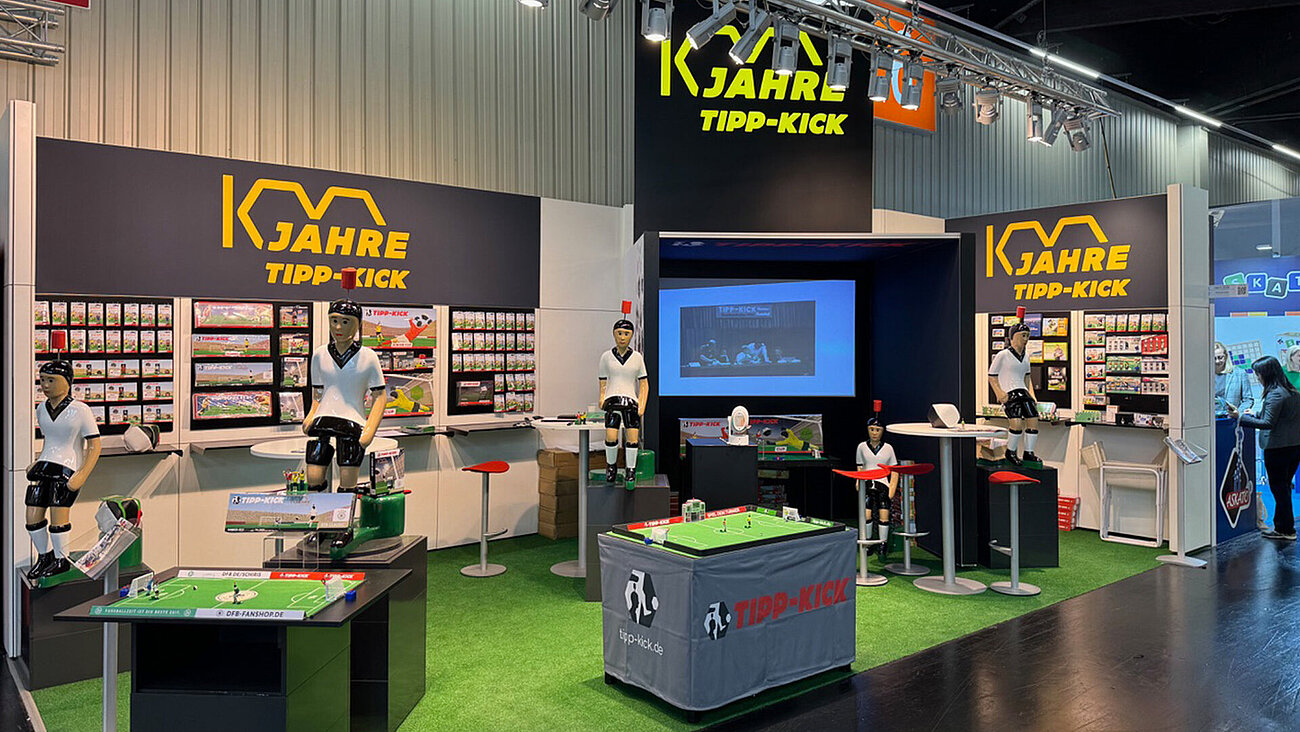
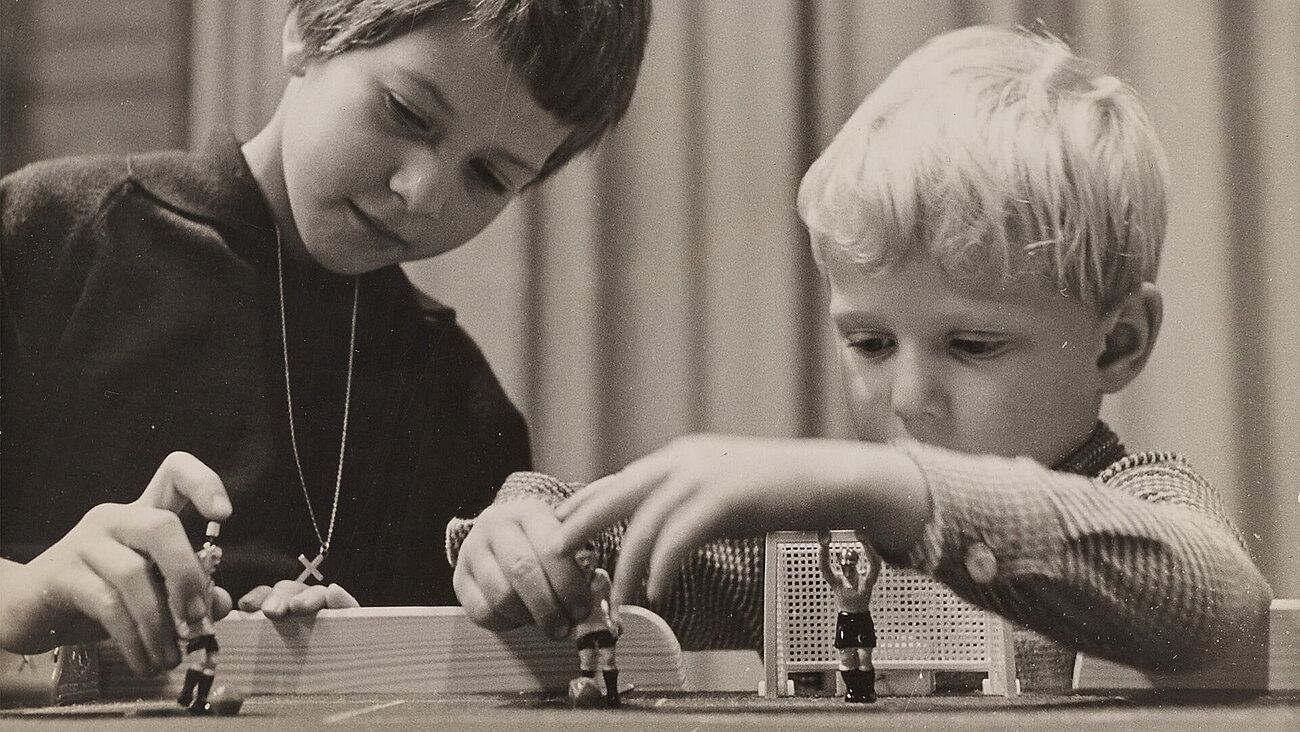
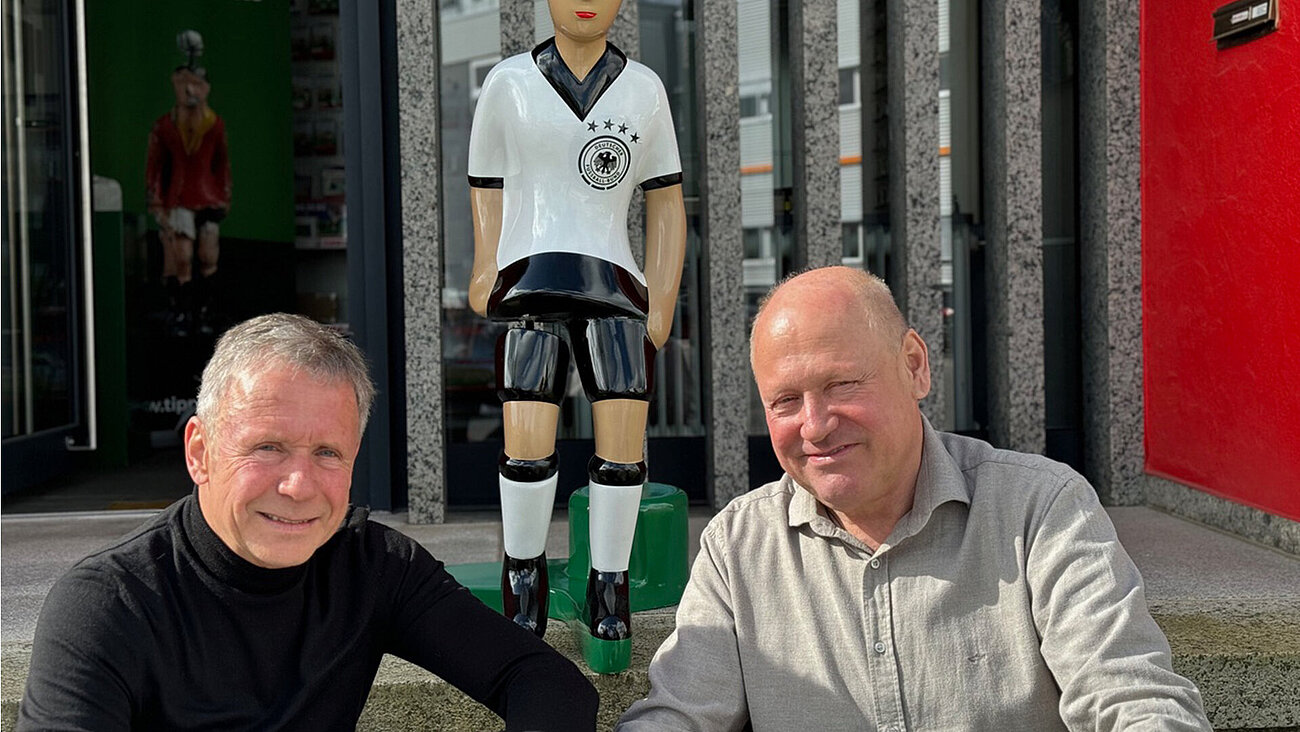
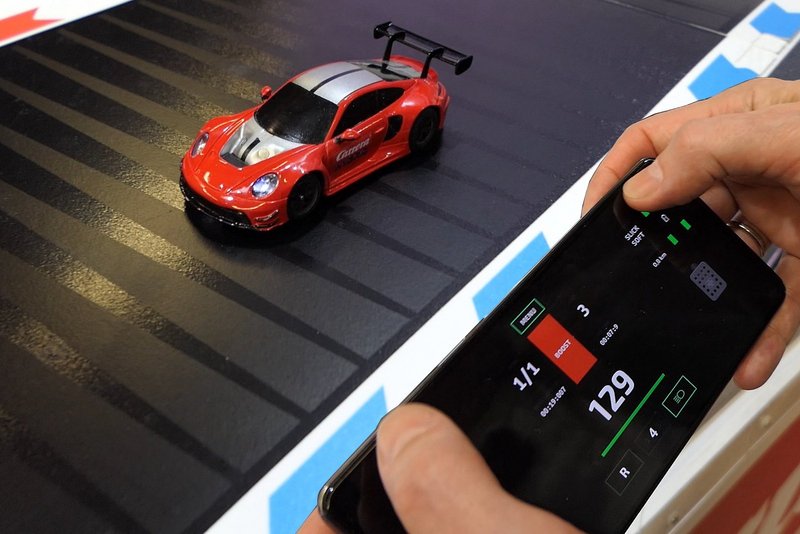
![[Translate to Englisch:] [Translate to Englisch:]](/fileadmin/_processed_/8/2/csm_20240325_Teaser__V2_9f71d54216.jpg)
